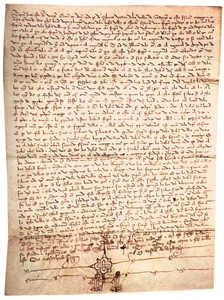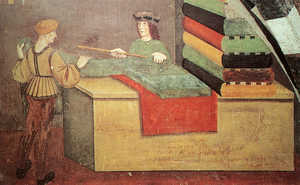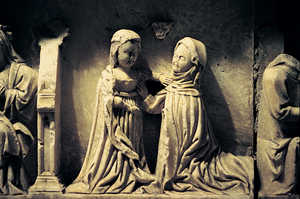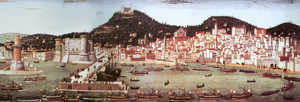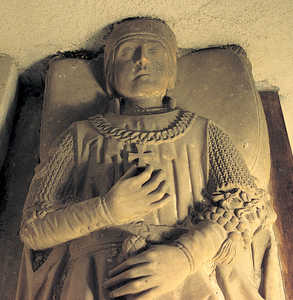Shifting from towers to palaces, as a symbol of the merger between rural and urban lineages
The second half of the XV century was a witness of a process that reached its climax through the second third of the XVI century, according to which old lineages, the Manors that somehow dominated the rural world, ended up merging with those in the towns, some of which were also very old, but usually of a more recent history. Elder Relative Manors on both Factions, Oñez and Ganboa, like those of Iraeta, Amezketa-larza, Zarautz, Murgia, Enparan or Loiola are good proof of it.
Indeed, halfway through the XV century, the Lords of the Elder Relative Manors and the merchants, jurists, scribes of towns aimed at the marriage between their sons and daughters. One of the most striking examples might be the one that took place in March 1461, staged by the barter marriage contract between the heir of the richest Gipuzkoan merchant of the epoch and one of his sisters, and the heir of three Elder Relative Manors and his only sister: Juan Lopez de Amezketa, Lord of the Altzega and Amezketa Manors and Urraca Velez de Altzega, still children, would be wedded "when coming of perfect ag' - in the case of girls, it was considered to be twelve years - to Sancho Martin de Elduain and his sister Catalina de Elduain. It is difficult to explain how this situation could be reached, when only four years before the confrontation between them was so violent. Because, furthermore, the examples can be many. The daughters of the Loiola Manor, or from other Elder Relative Manors, married without distinction between 1430 and 1500 to jurists, scribes, merchants and rural Manor owners of a lower stratum. Out of eleven marriages, only two married between similar Manors.
This type of situation posed a lot of questions and undermined many of the common believes of our history of the late Middle Ages. In any case, they are difficult to interpret and help us in our objective because of one important element: in almost every case, the urban Tower or the rural Manor constituted the linking element of the dowry. From this perspective, there arouse a symbiosis between the upper strata of both environments, the interests of which coincided and, out of the union of which, through such an efficient way as the socio-economic merger, there emerged at the beginning of the XVI century the stratum that would definitely govern the province until almost the fall of the Old Regime.
And with it, the modification and reform of quite a few Towers which were gradually turned into Urban Palaces, more to the taste of the epoch. And, by adopting the habits and customs of the others, many mercantile lineages became aristocratized (for lack of a better expression, in spite of the anachronistic term) and many Elder Relative Manors were also turned into Palaces, which were more comfortable for their owners.
The influence of economic and social factors was important. A new class was developed, brandishing great stregth in the Gipuzkoan panorama during the reign of the Catholic Kings: that of the civil servants that invaded the Castilian administration (the process continued well into the XVII century) and overtook several Secretariats. The determining factor that based its prestige on its Manor of origin was the construction of magnificent Palaces of a Reinassance style and European appearance that excluded the model of the old Tower of a late Middle Ages taste; palaces, such as those of the Zuazola Secretaries (Floreaga, built in brick according to the layout made by P. Malpaso, architect of the Catholic Kings, in Azkoitia), or the Idiakezs (in Main Street in Saint Sebastian, with an internal courtyard of orange trees, or that of Tolosa) or that of musician Antxieta (Azpeitia) are good examples that illustrate the aforementioned. And the reform of their Towers, undertaken by the title-holders of Manors like Zarautz in 1542 to turn it into the Palace still standing today, or those of Loiola, during Saint Igantius' time, are similar cases. Urban towers of a purely medieval style that were also "modernised" by their heirs: thus, the secretary of Isabel the Catholic Queen, Juan Lopez de Lazarraga (Oñati) whom we will mention later with further detail.
And we should not forget, either, that some of the lineages of the Elder Relatives since the end of the XVI century started taking positions inside the towns, obviously always in Towers that they acquired through purchases or marriage: the Zarautzs in Zarautz and Saint Sebastian, the Lazkaos or larzas in Segura, the Ganboas in Zumaia or Mutriku, the Unzuetas or Cebaras in Zestoa.
The especific behaviours of different lineages of diverse social backgrounds, the way in which they combined their interests and the "trade" of their Towers through the patterns of the marriage market, can illustrate the way in which the social groups that shared the common characteristics of owing that type of house operated, be it rural or urban lineages. We will take three paradigmatic examples from Gipuzkoa that synthesise the same number of model cases.
We can date the marriage between Pedro, illegitimate son of Iñigo Gebara, future first Earl of Oñati, and the heiress of the Larrastegi House, of Segura, halfway through the XV century. One of their children, Nicolas Gebara, pursued his career in the Court of the Catholic Kings, held the post of Deputy Mayor of the Palace, became a James Knight and Commander of the Order, Provost of Orio and Mayor of Aiztondo by Royal favour and was responsible for the construction of the Gebara Palace around 1480-90, still today preserved in Segura and which he, in his will dated 1504 called "those, main houses of mine". He constructed the Palace with the stone that came from the collapsed medieval tower that belonged to his elder brother, Bachelor Larrastegi. He married his first wife, one of the heiresses of the branch of the Elder Relative Manor of larza established in Segura (wedding the heiress of the Aurgazte House of Segura, a family of jurists and scribes) and quartered his arms of Gebara and Aurgazte with those of his wife on the Palace façade, one of the most beautiful ones in Gipuzkoa. Nicolas Gebara perfectly represents the case of a hinge figure between two epochs. Due to his origin and even somehow through marriage, he was anchored in the world of Manor Owners but esided in the important commercial town of Segura and, through his biography, we know that he embarked upon the new scenes adopted by the lineages in Gipuzkoa. As Deputy Mayor of the Palace, he placed his children in the "Houses" of the Infantes and even of Catalina de Aragón, Princess of Wales, and first wife of Henry VIII of England. The transformation of the medieval tower into an urban Palace of austere design physically illustrates its own evolution.

In July 1493, a marriage contract was signed between Juan Lopez de Lazarraga Araoz, later Mayor of the Order of Saint James, and finally Secretary and testamentary in 1504 of Isabel the Catholic Queen, Founder of the Bidaurreta Monastery (Oñati) (d. 1518) and Juana Ganboa Irarrazabal (1881/3-1511). The document is of great interest, both due to the personality of some of the undersigned as well as because of the representative character of the different strata and lineages that we have been discussing. All of them were Tower Owners, with which they also endowed themselves in the contract; the Lazarragas of Oñati, owners of their "rough stone and mortar houses... with their tower and vegetable gardens", with which Juan Lopez was endowed, represented a lineage of jurists that prospered under the shadow of the Gebaras, Lords of Oñati, for whom they constituted one of the greatests supports in the Earldom of Oñati; jurists that made the jump to Court, where Juan Lopez developed one of the quickest and most brilliant careers of the Gipuzkoans of his generation. The bride, Juana, was the single daughter of the Lord of the Olaso Manor, Juan Lopez de Ganboa Butroe (ar. 1460-1516), Head of the Ganboa Faction, and of his first wife, Maria Ibañez de Irarrazabal Astigarribia, Lady of the Irarrazabal House and Tower of Deba, hereditary Provosts of the town of Deba, whom he had married in June 1480. In the contract she was endowed with the "Irarrazabal house and tower" by her grandmother, widow of the last owner of the House. The Irarrazabals, besides being the main family in Deba, and allied to the Ganboa faction, were the hereditary provosts of Deba since 1421 and, although adopting features that approached them to the core of Elder Relative lineages, from their Towers near Deba, they were the centre of a thick network of merchant lineages, owners of towers that spread from Zumaia to Ondarru and aimed their business both at the Mediterranean, and at the Atlantic Ocean. And, finally, in the contract participated the already mentioned Lord of Olaso, genuine representative of the last generation of Elder Relatives, half a faction member, half a "business man" (a generation that disappeared almost completely through the first third of the XVI century), who cede his rights to the Irarrazabal House and adopted the role of a simple observer of the transfer of goods from his first wife, through his mother-in-law, to his daughter. The Olaso Manor and Tower was assigned to his son, born out of his second marriage, Martin Ruiz de Olaso Avendaño. From Oñati to Deba, in the contract that we take as model of the mixture of interests and combination of marital, commercial, social and personal strategies, the Towers kept their main role.
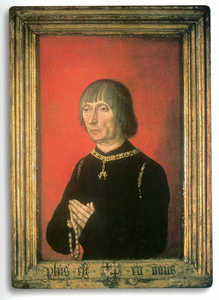
And finally, let us discuss the case of a lineage that, in the second half of the XV century, formed their family Tower in Azkoitia, established, through a happy policy of marital alliances, a thick network of commercial interests at a European level, aiming at a series of Towers spread through the Lower Urola and at their owners. The idiacaizs of Azkoitia, from their Black Tower (Etxebeltz) acquired the Manor Houses and Towers of the Lilis (Zestoa), Alzolaras (Aia) and the Elder Relative Manor of Achaga. They linked up with the Azkoitian families of merchants and jurists, the Olanos and the Zuazolas and, in time, constituted the main group of power in the province during the Old Regime, almost until the end of the XVIII century. At the beginning of the XVI century,from their Towers of Zestoa or Azkoitia, they already had an Archbishop of Brindisi and a Bishop of Adria (both in the kingdom of Naples) and the representatives of the different branches were in business in the main commercial towns of Europe with the main merchants of Bruges, London, Bristol, Florence or Sicily. Examples like that of the Idiakaizs of Azkoitia were frequently present in each Gipuzkoan town of the epoch.





